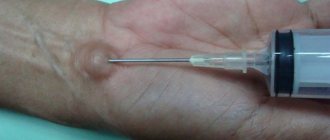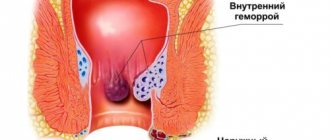Calcification in the liver is quite rare. Its danger lies in the fact that very often the disease is asymptomatic. Calcinosis is the deposition of calcium salts in the tissues of an organ. Calcifications can occur as a complication after an advanced inflammatory process. Also, the cause can be helminths, which very often affect the liver. When calcifications occur, liver function is disrupted. It is known that the organ performs protective, cleansing functions, participates in the digestion process, and in all metabolic processes in the body. Consequently, if there are problems with the liver, the whole body begins to suffer. Any pathological process requires consultation with a doctor.
Types of pathology
There are several types of calcifications. Their classification depends on the location of tissue damage, quantity and size. Typing is also associated with differences in the state of calcium metabolism and the course of the disease.
Single and multiple
Single calcification begins to form gradually. Pathological processes occur after infection with parasites and various helminths. If patients ignore treatment, the inflammatory process progresses. Damage to healthy tissue occurs and several lesions form inside the liver. Multiple calcifications gradually appear in these places.
Large and small
During diagnosis, the doctor must look at the size of the calcifications in order to prescribe appropriate treatment. Small pebbles increase to 1 mm in diameter. Large ones can reach up to 3 mm or more.
Linear and round
Another characteristic feature is the appearance of the formations. As a rule, they are linear, lined up in one stripe and may have rounded edges. When choosing the right treatment method, the doctor will definitely study the structure and shape of the calcifications
Left or right lobe
Calcifications can form in the right or left lobe of the liver in adults, in the ducts, in the vessels of the gland. With this arrangement, they cause disruption of the liver cells in a certain segment, and therefore pose a serious health hazard. They are often located near the excretory ducts.
What are calcifications in the liver and why are they dangerous?
The functions of the liver are to synthesize the main set of blood proteins, neutralize (detoxify) substances that adversely affect the entire body.
In addition, it is a source of bile and bile acids. Failure can occur in various pathologies, including if there are calcifications in the liver. Essentially, these are deposited calcium salts. They rarely appear in intact liver tissue.
Calcification of inflamed areas of the organ often accompanies bacterial and parasitic, as well as many other diseases.
What are calcifications from the standpoint of biochemical composition? Typically they contain carbonic acid residues (carbonate anions) and calcium ions. Calcifications can accumulate in almost all tissue structures and organs.
Often, calcifications in the liver, including in the fetus, appear after some kind of inflammation. Calcification is more often found in cases of chronic inflammation of hepatocytes.
It is possible that the described foci may appear in a disease such as tuberculosis. Foci of mycobacteria screening can appear almost anywhere. They are not as common in the liver, but these lesions are prone to calcification and calcification.
Inflammation is a universal protective reaction of the body in response to the penetration of foreign organisms. Calcification is one of the factors that supports this process. This is especially evident during parasite infestations. What parasitoses can cause the appearance of calcifications in the liver?
- amoebiasis;
- damage by malarial plasmodium;
- echinococcosis;
- alveococcal invasion;
- taeniasis, teniarinhoz;
- opisthorchiasis.
There are rare situations when liver calcification occurs at the site of any neoplasm. The causes of the described foci of calcification also include chronic hepatitis. Inflammatory foci of liver tissue replace calcifications.
There are large and relatively small lesions. In addition, single and multiple forms of liver tissue damage are distinguished. Most often they are localized in areas of the right lobe of the liver.
Liver calcification is a condition where there are several foci of calcification. They can be of various sizes. Calcifications in this case also reduce the volume of functionally active hepatocytes.
The location of calcification foci is also important. When tissue is compressed near the gallbladder and ducts, the latter can also be compressed. This is dangerous due to the appearance of obstructive jaundice.
Calcifications detected by ultrasound or tomography are rarely symptomatic. Usually this pathology has no clinical manifestations. Only sometimes foci of calcification in the liver tissue show symptoms equivalent to those of hepatitis. Patients are concerned about discomfort or pain on the right side.
When parasitic organisms settle in the human body, they cause various symptoms of parasitosis. What applies to them?
- weight loss;
- temperature rises;
- fatigue;
- weakness;
- skin itching;
- tendency to bleed;
- pain or heaviness in the subcostal area.
The patient is worried about nausea, he is concerned about his condition, and sometimes there is irritability or apathy. Loss of appetite, especially with parasitemia. There may be an unpleasant odor from the mouth.
Calcifications of a tuberculous nature are accompanied by weakness and pain localized on the right. At night the patient sweats, sometimes profusely. More often, however, calcium inclusions are discovered among the liver tissue by chance during a routine examination.
To determine the presence of calcifications, ultrasound, tomography, and radiography are used. Using the ultrasound method, the localization of calcium salt deposits is accurately determined. This is more accurately confirmed by MRI or CT.
Treatment approaches
If the patient's examination revealed microcalcifications (foci of calcification of very small sizes), then the attending physician usually recommends taking a course of therapy with ursodeoxycholic acid drugs - Ursosan or Ursofalk. These agents have the ability to dissolve calcifications, especially in cases where the anion is the acidic residue of bile acids. In the presence of large calcifications in the liver tissue, this type of treatment is ineffective.
How to treat calcifications that occur due to parasitosis? Tactics will depend on the size of the outbreak. If these are large calcifications that compress large areas of the liver tissue, surgical intervention makes sense.
For small single lesions, you can use antiparasitic agents or traditional methods of treatment. Pumpkin seeds help. You can also use garlic mixed with milk.
Milk thistle seeds in the form of capsules will be an excellent biological supplement in the fight against parasitosis.
Before starting treatment, you should consult with a therapist or gastroenterologist.
Calcifications are deposits of calcium salts in liver cells. Most often they appear after the liver is affected by infectious diseases and various parasites. This is usually a consequence of the disease:
- tuberculosis;
- malaria;
- echinococcosis;
- amoebiasis.
The formation of calcifications in organs is associated with metabolic disorders in the body.
According to the international classification of diseases, the following organ pathologies are distinguished:
- violations of acceptable standards regarding shape and location;
- hepatitis;
- metabolic disorders in liver cells;
- necrosis and degeneration of hepatocytes;
- damage to blood vessels and bile ducts;
- parasitic diseases.
As a result of disruption of the movement of bile through the liver, the small intestine loses the ability to properly absorb food, so toxic substances enter the lymphatic vessels. When decomposition products are not removed from the body for a long time, diseases begin to occur. Frequent diseases include liver congestion, which can develop into lymphoma, lymph tumor.
The patient must undergo a full medical examination, including a general blood test and biochemistry. A biopsy is considered the priority method, as it allows tissue sampling to study the presence of tumor cells. In certain cases, examination of organs with an endoscope is used. The patient is prescribed antitumor medications and diet. In hostile forms of the disease, stem cell transplantation is used.
Calcifications are areas in a particular organ where calcium salts are deposited. As a rule, salts are deposited in places of inflammation due to an infectious disease (for example, viral hepatitis). The etiology also includes pathological neoplasms, mechanical injuries, as well as helminthic infestations (amoebiasis, echinococcosis, giardiasis).
Calcifications can form not only in the liver, but also in many other organs.
It is believed that calcification occurs due to a disorder of calcium metabolism in the body, however, among experts there is an alternative point of view, which boils down to the fact that calcium deposits in the affected area of tissue is nothing more than a protective reaction of the body that prevents the further spread of the pathological process.
Strictly speaking, calcifications in the liver are only a consequence of a previous pathology, but not an independent disease. The plaque formed from calcium salts prevents inflammation or necrosis from spreading further.
The following types of calcifications are distinguished:
- small;
- large;
- single;
- multiple;
- linear.
These formations are small areas filled with deposits of calcium salts. In order for calcifications to form in the liver, the reasons must be very serious. In particular, this can be triggered by the following influences:
- pathological neoplasms;
- infestations of helminths and protozoa;
- infectious diseases;
- mechanical trauma.
If we turn to the mechanism of formation, most scientists believe that calcification of the left lobe of the liver, as well as the right, is formed as a result of the destruction of liver tissue, as well as against the background of calcium metabolism disorders in the human body. There is another opinion, according to which these deposits are one of the ways to protect the body from further growth of the focus of pathological changes, inflammation or necrosis. However, in both cases, calcification in the liver is not an independent disease, but only a consequence of a previous pathological process.
They are classified by number, size and shape. In particular, the following types are distinguished:
- small;
- large;
- linear;
- single;
- multiple.
We suggest you read: How to put a sleeping person to sleep
A focus of lime deposits can form anywhere in the liver parenchyma, even involving blood vessels and bile ducts.
Such a formation as a single liver calcification most often forms against the background of helminth infections, for example echinococcosis. This is due to the rarity of massive infestation of the organ with large parasites. Although the liver is an ideal nutrient medium for them, the complex breeding cycle of helminths and the high level of hygiene of the population prevent them from entering the human body in large quantities.
Most often, a person does not notice the presence of the parasite for a long time, because the liver compensates for the work of hepatocytes destroyed by it, and the symptoms of general intoxication, as a rule, are attributed to other pathological processes. During this time, a single focus of calcification has already formed at the location of the helminth. It most often does not cause noticeable inconvenience to its wearer.
Typically, such calcification in the liver is detected on an ultrasound scan prescribed for other reasons.
There is no such diagnosis as liver calcifications, and therefore there is no code corresponding to this symptom in ICD 10. A gastroenterologist will advise you on how to treat a single calcification in the liver with medication.
Multiple lesions
If there is more than one calcification, the patient’s situation worsens. What this means for the body is not difficult to understand. After all, more hepatocytes fall out of work than with a single lesion. In addition, they can infringe on blood vessels and bile ducts, disrupting liver function, even leading to the appearance of areas of inflammation and necrosis. The formation of a large number of foci of calcification occurs in response to serious pathologies:
- viral inflammation of the liver (hepatitis);
- abdominal tuberculosis affecting the liver;
- parasitic diseases caused by protozoa (amoebiasis);
- metastatic calcinosis (disorder of hormonal control of calcium metabolism);
- metabolic calcinosis (a disorder of the buffer systems that retain calcium ions within the bloodstream and in the cellular fluid).
Causes of pathology development and risk factors
Pebbles appear during pathological processes of various etiologies. Salt deposits occur with prolonged or severe inflammation if the patient is prescribed ineffective or incorrect treatment. The main causes of calcification:
- metabolic disorders;
- progression of invasive diseases;
- the presence of foci of inflammation in soft tissues;
- tuberculosis in a complicated form.
It is important to know! Mild inflammation can cause microcalcification deposits. They occur during parasitic diseases, when helminths appear in the body.
Why are they formed
Calcinosis is a condition characterized by the formation of calcium deposits in the parenchyma or vessels. Calcium should be in a dissolved state, but if metabolism is disrupted, it precipitates and forms solid formations. Pathology is provoked by many factors that can influence physiological processes in tissues.
First of all, this is a dysfunction of the endocrine system responsible for the synthesis of the hormones calcitonin and parathyroid hormone, as well as an increase in calcium levels and a shift in blood pH, a deterioration in physiological reactions, and a decrease in the formation of chondroitin sulfate. Pathological formation may be caused by a chronic disease, for example, myeloma, tumor, polycystic disease, nephritis, diseases of the endocrine system, or may be the result of a damaging factor (excess vitamin D, mechanical trauma, degenerative changes).
Calcification can occur against the background of an infectious disease, a neoplasm in the liver, or infection with helminths. Scar tissue (and cartilage) is susceptible to calcification; calcareous conglomerates can form around atherosclerotic plaques and parasites. It is believed that calcinosis can appear as a result of frequent stress, poor nutrition, and bad habits.
In the liver, parenchymal and canalicular calcifications are distinguished. In the first case, the deposition of lime salts occurs in the liver tissues, and in the second case, calcareous stones are found in the bile ducts. Calcifications can form in the left or right lobe of the liver, in the vessels of the gland or its ducts. Stones interfere with the functioning of liver cells and can be dangerous if they form near the ducts.
Of the parasitic calcifications, echinocaccus most often occurs in the liver. When infected with a parasite, an echinococcal bladder grows in the liver cells, which is a cyst. The lesion grows by about 1 mm per month and can become very large. The cyst puts pressure on the surrounding tissues and disrupts the functioning of the liver, and if it ruptures, the contents leak into the abdominal cavity, which can cause anaphylactic shock.
Over time, the walls of the cyst thicken, fibrotize and calcify. Degenerative processes occur in places, so the cysts in the photographs do not have clear contours. Calcification of the cyst indicates an inactive form of echinococcosis. Clear, dense shadows appear with non-parasitic cysts. Thus, the cause of calcification can be any pathology that provokes inflammation in the liver parenchyma.
The likelihood of salt deposits forming in the gland exists if a person has suffered:
- malaria;
- amoebiosis;
- echinococcosis;
- tuberculosis;
- viral or alcoholic hepatitis.
Calcinosis can also be found in the fetus or newborn, although this is rare. Pathology indicates dysfunction of the heart or other organs. Calcified hydatid cysts can suppurate, and the pathological process occurs without fever or acute symptoms. Gas and liquid accumulate in the cyst, which means there are conditions for the development of an anaerobic infection.
Features of calcinosis in newborns
Calcification in children from birth appears in rare situations. But sometimes, during examination, salt deposits are diagnosed in newborn babies. Diseases of the heart and other internal organs lead to the development of this pathology.
In addition, the appearance of calcifications in infants has been noted if during pregnancy the mother did not eat properly and did not follow a rest regime.
Once the diagnosis is confirmed, the child should be shown to the doctor regularly. Treatment depends on the complexity of the pathology and the presence of damage to neighboring organs.
Symptoms of calcification
Symptoms of calcification rarely involve acute pain. By their nature, they resemble the progression of hepatitis. The following signs of the disease can be identified:
- loss of appetite, nausea;
- pain in the right hypochondrium;
- digestive system disorder;
- fast fatiguability;
- dizziness;
- rapid weight loss.
Attention! The main sign of the development of calcification is that the skin becomes bright yellow in color. When the Glissonian capsule stretches in the body, acute pain occurs under the ribs.
Diagnostic procedures
Calcinosis often occurs in a latent form, so it is diagnosed, as a rule, randomly or during a routine examination. The information obtained determines further treatment tactics.
- Lab tests. Laboratory studies do not always show the real clinical picture that occurs inside the liver. But if calcification is suspected, the doctor must prescribe a biochemical blood test. This method helps determine the concentration of calcium ions. If the level is above normal, the doctor expands the diagnostic search.
- MRI. Magnetic resonance imaging is the most informative and simple diagnostic method. During the procedure, calcifications are displayed on the monitor in three dimensions. The disadvantages of this examination method include high cost. An alternative to MRI is an x-ray. If there are calcifications in the liver, the doctor sees formations that have a high level of density.
- Ultrasound. Used in rare cases. During an ultrasound examination, the doctor cannot accurately determine the shape and type of calcifications. Only compactions or clumps that give a shadow are visible on the monitor. Ultrasound is used in combination with other methods.
Signs of liver calcification
The disorder does not always occur with clinical manifestations. In most cases, patients learn about the pathology only when contacting them for another issue or after a planned examination.
Calcinosis is not an independent disease, therefore it has no specific symptoms. Pathology is detected using objective research methods. A violation can be assumed based on the clinical picture that occurs during inflammatory processes in the liver.
If there are a lot of calcifications in the liver, they can cause the following symptoms:
- nausea, vomiting;
- decreased appetite;
- painful sensations in the right hypochondrium;
- yellowness of the skin;
- stool disorder;
- decreased performance, emotional lability.
When the gland is parasitic, symptoms of intoxication and allergic reactions occur, and hepatosplenomegaly (enlarged liver and spleen) is characteristic.
With echinococcosis of the liver, a round, dense formation (cyst) can be felt. The patient sleeps poorly, often experiences headaches, acne and rashes appear on the skin, and there is an unpleasant odor from the mouth.
If calcification develops against the background of tuberculosis, then the patient quickly loses weight, feels constant weakness, pain in the right hypochondrium, a dry cough first appears, and then sputum with blood clots comes out. The liver and spleen are significantly increased in size.
Treatment methods
When developing treatment tactics, the doctor takes into account the fact that calcinosis develops as a result of other diseases. Therapy must be comprehensive to eliminate the causes of the underlying pathology.
Medication
If salt deposits accumulate in the liver as hepatitis progresses, the patient is prescribed antiviral and immunomodulatory drugs. They are taken strictly according to the instructions. The most effective remedy is Ursosan, but it can only be taken under the supervision of a doctor. After undergoing drug therapy, the doctor prescribes a method for eliminating formations in the liver.
During treatment, Ringer's solution, rheosorbilact and glucose are combined. The drugs are administered intravenously. If pathological processes of calcification in the body have led to kidney damage, the patient needs to undergo hemodialysis or extrarenal blood purification.
Surgical treatment is contraindicated, since during surgery it is possible to damage neighboring organs, the spleen and healthy tissue. There is a risk of developing even more serious complications.
Folk remedies
Along with drug therapy, the patient is prescribed folk remedies. If mineral clots are deposited when affected by helminthic infestations, the patient is recommended to use pumpkin.
Pumpkin pulp helps normalize the functioning of the liver, as well as hepatobiliary organs. It can be boiled, steamed or baked in the oven with honey. Herbal teas also have a positive effect on the liver. It is recommended to brew milk thistle to remove small formations.
Doctors agree that this treatment of liver calcifications is the most correct option. Traditional medicine does not have a negative impact on the functioning of internal organs.
Diet
When a patient takes medications, he needs to adhere to the principles of proper nutrition. With the help of products, you can normalize the functioning of bile and restore the liver.
One of the main conditions of the diet is the most gentle choice of ingredients. The meat should be lean; you should not eat fatty foods or smoked foods. It is important to process foods correctly and not fry them in vegetable oil. Confectionery and chocolate are strictly prohibited. Your doctor will help you formulate your diet.
How to treat?
To minimize the harmful effects of calcifications on the liver, you should understand what it is: prescribing treatment after a correct diagnosis is not difficult. These formations are always secondary and can only be overcome by overcoming the underlying disease.
The fight against calcifications includes drip administration of solutions of glucose, Ringer, rheosorbilact. If there are foci of lime deposits on the kidneys, hemodialysis is prescribed.
Surgical removal of calcifications in most cases is not practiced due to the fact that the harm caused to surrounding healthy tissues outweighs the benefits of such surgical intervention.
After treatment, you will have to adhere to certain dietary restrictions for the rest of your life:
- When cooking, minimize the use of fats;
- reduce consumption of table salt, fried, spicy and fatty foods;
- take protein in the form of fish dishes and fermented milk products;
- eat more seasonal homemade fruits, herbs, and vegetables;
- drinking - up to 2 liters per day, provided the kidneys are healthy;
- only natural sweets - dried fruits, honey;
- giving up alcohol and tobacco.
Answering the question about what calcification of the left or right lobe of the liver is for the human body, an experienced doctor will call such a pathology a marker of the presence of serious problems in the body. Whether they are a thing of the past or still threaten human health will be revealed by a more thorough examination.
It is necessary to adhere to a healthy diet
Folk remedies
The advice of healers comes down to three main points:
- eat more pumpkin seeds and pulp to expel worms from the body;
- drink plenty of clean water to remove toxins and excess salts;
- eat well-cooked fish and meat in order to destroy parasites in them.
Since treatment with folk remedies is always a complex undertaking, it is recommended to use turmeric and milk thistle to maintain the overall performance of the liver.
Preventive measures
Stones will not appear in the liver if the patient gives up bad habits. Alcohol is strictly prohibited. Strong tea, coffee and cocoa are also excluded from the menu. Sweet carbonated drinks also affect the condition of the liver. They can be replaced with water, herbal tea, or freshly squeezed juice.
Advice! Patients must lead an active lifestyle. Exercises and daily gymnastics help saturate the liver, as well as other internal organs, with oxygen.
If a patient experiences pain under the ribs as the infection spreads throughout the body, this is liver calcification, which can negatively affect the patient’s health.
Regardless of the location and formation of stones, the patient requires proper therapy, and sometimes complete hospitalization in a hospital. The treatment of calcifications in the liver should be carried out by a qualified doctor who, when choosing drugs, will take into account the condition and form of the tumors.
Secondary prevention
Calcifications in the liver are a process in which calcium salts accumulate in the cells of the organ.
Education occurs as a complication after an inflammatory disease that has remained untreated for a long time, or after infection of the liver with helminths.
The formation of calcifications is considered to be a body function aimed at protection. What consequences does this have for the body? Is it possible to fight calcifications in the liver?
The liver is an organ that “does not complain” about problems until the disease becomes serious.
For prevention, you should do “fasting days” in your diet, helping the liver cope with its functions and cleanse the body of toxins and harmful substances.
Treatment of diseases of this organ requires long-term treatment and a strict diet.
The reasons for this are different: intemperance in food and alcohol consumption, viruses, infection with helminths, bacteria.
Even snacking on the go and the rhythm of modern life is a reason that leads to a deterioration in overall health and, as a result, to liver disease.
When liver cells die, a kind of lid consisting of salts appears in their place, which vacuumizes this part, preventing infection from the liver from spreading throughout the body.
Symptoms of the presence of calcifications in the liver are similar to the symptoms of hepatitis, which in most cases leads to these formations:
- pain appears near the right hypochondrium;
- Vessels in the abdominal area dilate, fluid accumulates;
- diarrhea;
- there is a feeling of weakness, indifference;
- there may be vomiting with blood;
- there is no feeling of hunger.
Calcifications formed in the liver can be of several types. They are divided into small, linear, single, large and multiple.
And they depend on how disrupted the calcium metabolic process is in the body. Most often, this substance is deposited in the left or right lobe of the liver.
Perhaps you have lived with them since childhood, or maybe only for a few days. Salt deposits occur as a result of an inflammatory disease or infection with helminths in early childhood.
After discovering this disease, the question arises: how to treat calcifications formed in the liver, and is it worth making efforts to treat?
The deposit itself does not require separate treatment, but it is imperative to establish the cause of calcifications.
Most often, the body tries to isolate cancerous tumors in this way. The first thing to do is to conduct a complete and thorough examination.
If you have chronic liver diseases, you should regularly do ultrasound and biochemical blood tests, which will make it possible to immediately see negative changes in the liver and respond to them in time.
If it turns out that there are no malfunctions and no diseases have been identified, the liver copes well with its functions, then there is no need to eliminate calcifications.
But it’s worth radically reconsidering your lifestyle: paying attention to proper nutrition, introducing physical activity into your regime, limiting the consumption of alcohol and tobacco products.
In very rare cases, calcium deposits in the fetus are detected on organ tissues. What causes such deviations in child development? There is no exact answer to this question yet.
One thing is known that in the future such a child has a high probability of pathologies of the heart, liver or other organs.
Today it is not possible to treat calcifications in the liver of the fetus. To avoid complications during pregnancy, the expectant mother needs to be under constant supervision of medical professionals in order to begin treatment on time for both the fetus and its mother.
After all, the liver continues to work until its disease progresses to an acute or chronic stage. And then treatment will be extremely difficult.
It is easier to prevent any pathologies than to later look for ways to get rid of them.
The following tips will help prevent calcifications:
- seasonal vegetables should be the basis of your menu. For meat, eat poultry, rabbit, veal, and completely avoid pork. Give preference to fish caught in sea water;
- Everyone’s favorite confectionery products should be replaced with nuts and dried fruits; preference should be given to fruits that grow in the region of residence rather than those brought from afar. The same applies to berries;
- If possible, stop drinking alcohol and tobacco products;
- when heat treating, prefer boiling, stewing, baking, steaming;
- Be sure to exercise daily and drink your daily allowance of plain still water.
If the patient is diagnosed with the formation of microcalcifications, the doctor will recommend removing excess calcium from the body with the drug “Urosan” or “Ursofalk” - this will stop the disease at the initial stage and prevent its development.
Traditional medicine focuses on the fact that pumpkin pulp baked with honey is a well-known remedy that helps prevent many liver diseases.
Medicine has proven that herbal infusions, based on milk thistle, have a good effect on its performance.
There are a lot of recipes in folk medicine for eliminating calcifications, and everyone can choose the one that is suitable for them.
Listen carefully to the signals that your body sends, and then you will not have to regret the lost time, drug treatment will pass quickly, and the course of the disease will occur with minimal complications.
As a result, there is no need to worry about the formation of calcifications.
Preventive measures include maintaining a healthy lifestyle and giving up bad habits.
Proper nutrition consists of eating seasonal foods, vegetables, herbs, fruits, lean meats and dairy products. For sweets, eat honey, nuts, dried fruits
It is also important to drink enough water per day. In addition, it is important to exercise and spend a lot of time outdoors
Traditional treatment:
- against helminthiasis: you can get rid of it with pumpkin seeds;
- pumpkin pulp in combination with honey copes well with diseases of the hepatobiliary system;
- herbal teas based on milk thistle also have a positive effect.
If you are diagnosed with liver calcifications, follow the regimen recommended by doctors:
- limit the consumption of salty, spicy, fried and fatty foods;
- stick to a diet enriched with seasonal vegetables and fruits, herbs;
- try to get protein in an easily digestible form (fermented milk products, fish);
- for sweets, eat honey, raisins, dried apricots, dates, nuts, berries and fruits;
- try to prepare dishes without fat (steamed, boiled, soaked, stewed without spices);
- completely give up smoking and alcohol;
- if your kidneys are healthy, drink up to 2 liters of water per day, this allows you to maintain a high metabolic rate.
If you are diagnosed with calcifications in your liver, stick to your diet.
Calcifications in the liver often signal serious problems in the body, but it is not known whether they are a thing of the past or still persist. In any case, you need to undergo a full diagnosis, treatment appropriate to the diagnosis, and not neglect the recommendations of doctors regarding lifestyle.
You can contact the hepatologist in the comments. Don't hesitate to ask!
This article was last updated: 07/23/2019
Didn't find what you were looking for?
There are many liver diseases, and their treatment is usually long and monotonous. Early diagnosis will help to make a timely diagnosis and begin therapy. Ignoring alarming symptoms can lead to progression of the disease, chronicity of the process and even death.
Treating chronic diseases is much more difficult and takes longer; they often entail irreversible changes in other organs and systems.
All liver diseases are associated with inflammation of the organ tissue and disruption of its functions. The causes of diseases are varied: viruses, bacteria, protozoa, helminths, violations of diet and metabolic processes in the body, disruptions in the immune system, complications of other diseases, oncology.
It is good when the disease is successfully diagnosed at an early stage, a course of treatment is completed, liver function is restored, and the person can enjoy a full life. But there is a different outcome. Calcifications may appear at the site of inflammation.
What are calcifications and why do they occur?
Sometimes, after an illness, when all the symptoms have gone and the liver is working stably, or during a random ultrasound or x-ray examination, doctors find calcifications.
Calcifications are areas of organ tissue of different sizes with the deposition of mineral salts. Often this process is secondary and occurs at the site of long-term inflammatory processes in tissues.
Most often, calcifications occur after liver damage by infectious pathogens and parasites, such as tuberculosis, malaria, echinococcosis, and amoebiasis.
Such calcium deposits can occur in any organs and tissues. Less commonly, calcifications are found after hepatitis and prolonged inflammation of the liver. There are known cases where salt deposits were found in liver tumors.
The process of calcification can be attributed to the protective functions of the body. Thus, the human body protects itself from the spread of the threat by “cementing” the cause.
Initially, the organ tissue is damaged due to infection or another reason, leading to long-term inflammation and death of liver cells, scarring. Over time, the body’s defenses are activated and a salt plaque forms in place of the dead tissue, preventing the spread of the disease.











